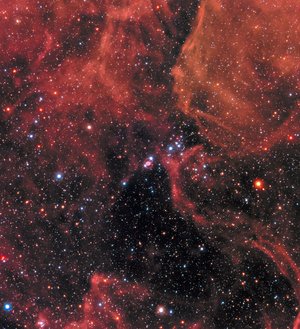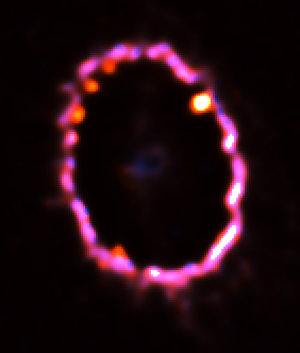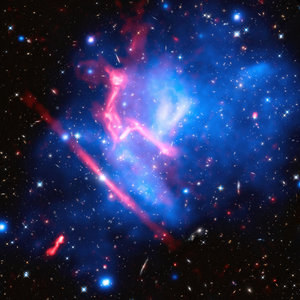Accept all cookies Accept only essential cookies See our Cookie Notice

About ESA
The European Space Agency (ESA) is Europe’s gateway to space. Its mission is to shape the development of Europe’s space capability and ensure that investment in space continues to deliver benefits to the citizens of Europe and the world.
Highlights
ESA - United space in Europe
This is ESA ESA facts Member States & Cooperating States Funding Director General Top management For Member State Delegations European vision European Space Policy ESA & EU Space Councils Responsibility & Sustainability Annual Report Calendar of meetings Corporate newsEstablishments & sites
ESA Headquarters ESA ESTEC ESA ESOC ESA ESRIN ESA EAC ESA ESAC Europe's Spaceport ESA ESEC ESA ECSAT Brussels Office Washington OfficeWorking with ESA
Business with ESA ESA Commercialisation Gateway Law at ESA Careers Cyber resilience at ESA IT at ESA Newsroom Partnerships Merchandising Licence Education Open Space Innovation Platform Integrity and Reporting Administrative Tribunal Health and SafetyMore about ESA
History ESA Historical Archives Exhibitions Publications Art & Culture ESA Merchandise Kids Diversity ESA Brand Centre ESA ChampionsLatest
Space in Member States
Find out more about space activities in our 23 Member States, and understand how ESA works together with their national agencies, institutions and organisations.
Science & Exploration
Exploring our Solar System and unlocking the secrets of the Universe
Go to topicAstronauts
Missions
Juice Euclid Webb Solar Orbiter BepiColombo Gaia ExoMars Cheops Exoplanet missions More missionsActivities
International Space Station Orion service module Gateway Concordia Caves & Pangaea BenefitsLatest
Space Safety
Protecting life and infrastructure on Earth and in orbit
Go to topicAsteroids
Asteroids and Planetary Defence Asteroid danger explained Flyeye telescope: asteroid detection Hera mission: asteroid deflection Near-Earth Object Coordination CentreSpace junk
About space debris Space debris by the numbers Space Environment Report In space refuelling, refurbishing and removingSafety from space
Clean Space ecodesign Zero Debris Technologies Space for Earth Supporting Sustainable DevelopmentApplications
Using space to benefit citizens and meet future challenges on Earth
Go to topicObserving the Earth
Observing the Earth Future EO Copernicus Meteorology Space for our climate Satellite missionsCommercialisation
ESA Commercialisation Gateway Open Space Innovation Platform Business Incubation ESA Space SolutionsLatest
Enabling & Support
Making space accessible and developing the technologies for the future
Go to topicBuilding missions
Space Engineering and Technology Test centre Laboratories Concurrent Design Facility Preparing for the future Shaping the Future Discovery and Preparation Advanced Concepts TeamSpace transportation
Space Transportation Ariane Vega Space Rider Future space transportation Boost! Europe's Spaceport Launches from Europe's Spaceport from 2012Latest

The evolution of SN 1987A
Thank you for liking
You have already liked this page, you can only like it once!
Thirty years ago, on 23 February 1987, the light from a stellar explosion marking the death of a massive star arrived at Earth to shine in Southern Hemisphere skies.
Located in the Large Magellanic Cloud, a satellite galaxy of the Milky Way, SN 1987A was the closest observed supernova to Earth since the invention of the telescope. Studying it for the last 30 years has revolutionised our understanding of the explosive death of massive stars.
In operation since 1990, the NASA/ESA Hubble Space Telescope has observed the supernova remnant many times, as highlighted in this montage. The images show its evolution between 1994 and 2016, and highlight the main ring that blazes around the exploded star.
A new wide-field image was also taken by Hubble in January 2017 to mark the 30 year anniversary.
By observing the expanding remnant material over the years, Hubble has helped to show that the material within the ring was likely ejected 20 000 years before the actual explosion took place.
The initial burst of light from the supernova initially illuminated the rings. They slowly faded over the first decade after the explosion, until a fast-moving shell of gas ejected during the supernova slammed into the central ring, sending a powerful shockwave through the gas, heating it to searing temperatures and generating strong X-ray emission.
This caused clumps of denser gas within the ring to light up like a string of pearls, seen as the increasing number of bright spots, which are now fading again.
As the shock wave continues to move through the shells ejected by the dying star in its final throes of life, who knows what new details will be revealed?
-
CREDIT
NASA, ESA and R. Kirshner (Harvard-Smithsonian Center for Astrophysics and Gordon and Betty Moore Foundation) and P. Challis (Harvard-Smithsonian Center for Astrophysics) -
LICENCE
ESA Standard Licence

SN 1987A in 2017

The glowing gas ring around Supernova 1987A

Hubble reveals structure of Supernova 1987A debris

Supernova remnant 1987A















 Germany
Germany
 Austria
Austria
 Belgium
Belgium
 Denmark
Denmark
 Spain
Spain
 Estonia
Estonia
 Finland
Finland
 France
France
 Greece
Greece
 Hungary
Hungary
 Ireland
Ireland
 Italy
Italy
 Luxembourg
Luxembourg
 Norway
Norway
 The Netherlands
The Netherlands
 Poland
Poland
 Portugal
Portugal
 Czechia
Czechia
 Romania
Romania
 United Kingdom
United Kingdom
 Slovenia
Slovenia
 Sweden
Sweden
 Switzerland
Switzerland

























